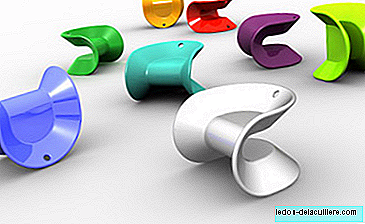
When you stop to watch videos of births at home you realize that most women end up dilating or giving birth in the water, in a large bathtub in the middle of the dining room. If midwives use this system so that women are there better than out of water, why is it not used in hospitals?
Well, some hospitals do use bathtubs, but they are the least and perhaps for quite logical reasons of lack of space. Or is it perhaps that dilating in water is not so much? Next we are going to talk about the scientific evidence behind dilation or water birth: water birth, yes or no?
What the scientific studies say
Luckily for us, the Cochrane He made a review of studies on dilation in labor bathtubs in 2004, achieving a total sample of 2,939 women. In this review they wanted to know if the immersion of a woman in the water helps to relax and reduce the use of analgesia or if it is not for as much and also poses a risk of infection for the baby or the mother or even a risk for the baby, that could suck water at birth.
They analyzed eight trials and concluded that the use of bathtubs during childbirth helps to significantly reduce the use of epidural anesthesia. There were no differences in terms of instrumentalized deliveries, nor were there differences in the rate of caesarean sections.
Yes, it was observed that women who used a delivery bath reported significantly less pain in the dilation process. There were no differences in the Apgar of the babies at five minutes after birth, in the income of the babies in the neonatal unit or in the rates of neonatal infection.
That is, to use the bathtub to give birth It is no worse in any way than not using it and yet improves pain of women and makes it less necessary to use anesthesia To give birth.
A more recent study, conducted in 2007, analyzed 200 women who used a bathtub, some before reaching a 5 cm dilation and others after having dilated those 5 cm. With this they wanted to see if there was any difference between them to know when it was better for a woman to do the immersion in the water, if soon or when she had been dilating for a while.
They saw that women who entered the water earlier had a longer period of labor (9.8 hours) compared to those who entered later (8.5 hours). They also saw that the former ended up making more use of synthetic oxytocin (57%) than those who later entered the bathtub (30%) and also saw that women who used water before made more use of epidural anesthesia (27%) than those who used it later (9%).
After all this they concluded that the use of the delivery bath was preferable during dilation once a minimum dilation of 5 cm had occurred.
What does the Ministry of Health recommend
In the light of the evidence shown, the Ministry of Health in its Clinical Practice Guide on Normal Birth Care says the following:
Hot water immersion is recommended as an effective method of pain relief during the late phase of the first stage of labor.
That is, water birth is recommended whenever possible, but using immersion late, when the dilation is already somewhat advanced, so as not to stop it and avoid other interventions.
So now tell us a little, is there a possibility of giving birth in the water in your hospitals? You have done use of a birthing tub ever? How was the experience?



![[Christmas Special] Advertising bombing, target children](https://img.ledos-delacuillere.com/img/bebesy3-2019/bombardeo-publicitario-objetivo-los-ni-os.jpg)








